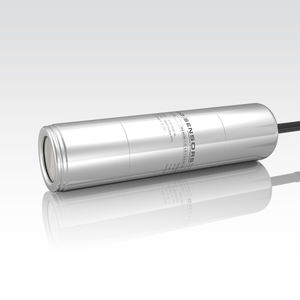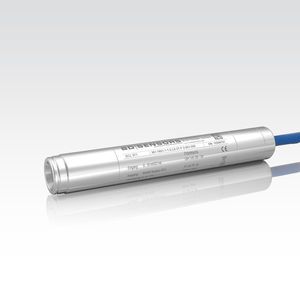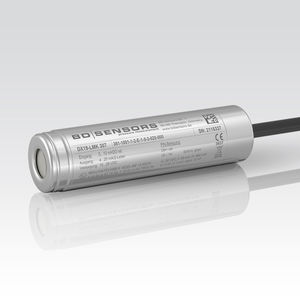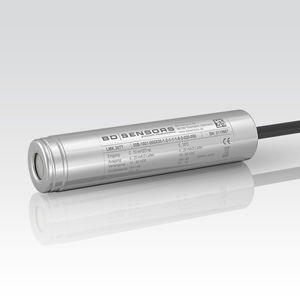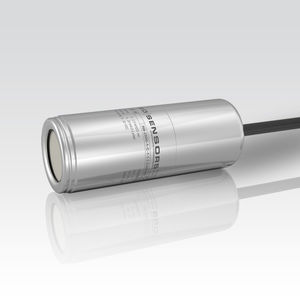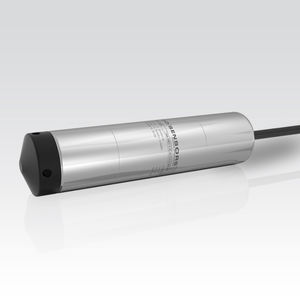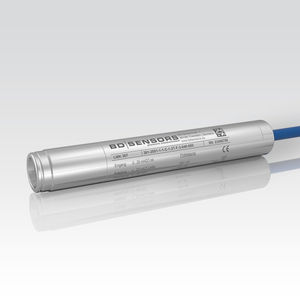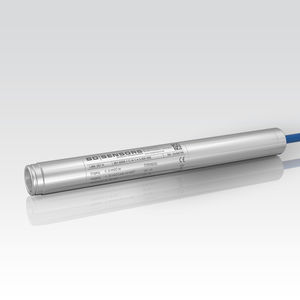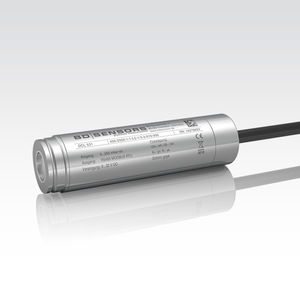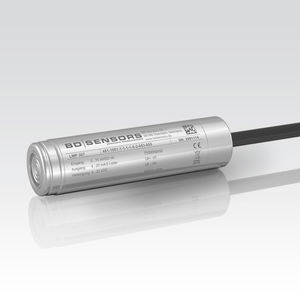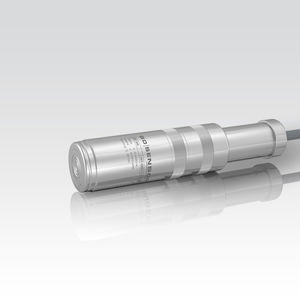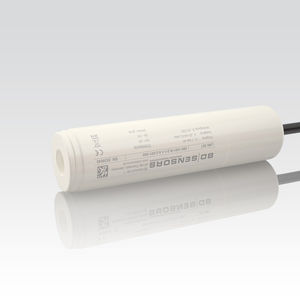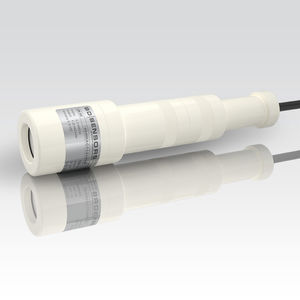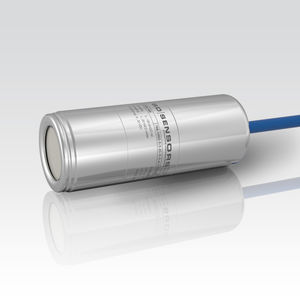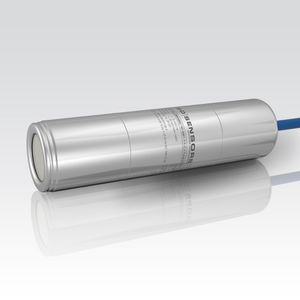
Hydrostatic level sensor LMK 306for waternot specifiedfor storage tanks

Add to favorites
Compare this product
Characteristics
- Technology
- hydrostatic
- Medium
- for water
- Interface
- not specified
- Applications
- for storage tanks, for fill monitoring, for OEM, for industrial applications, for basin, for small access holes
- Other characteristics
- stainless steel, compact, submersible, programmable, temperature-compensated, miniature, IP68
- Level range
Min.: 6 m
(19'08" )Max.: 200 m
(656'02" )- Process pressure
Min.: 0.6 bar
(8.7 psi)Max.: 20 bar
(290.08 psi)- Process temperature
Min.: -10 °C
(14 °F)Max.: 70 °C
(158 °F)
Description
The slimline probe LMK 306 with ceramic sensor has been especially designed for the continuous level measurement at confined space conditions. Permissible media are clean or slightly contaminated water and thin fluids.
Different cable sheath materials are available in order to achieve maximum media compatibility.
Features:
- nominal pressure: 0 ... 6 mH2O up to 0 ... 200 mH2O
- accuracy: 0.5 % FSO
- diameter 17 mm
- excellent long term stability
- suitable for hydrostatic level measurement e.g. 3/4" pipes
- excellent linearity
Optional Features:
- different cable materials
- customer specific versions e.g. special pressure ranges
Preferred areas of use:
- level measurement at confined space conditions
- ground water monitoring
- depth or level measurement in wells
- drinking water abstraction
- level measurement in open and closed tanks
Catalogs
data sheet LMK 306
4 Pages
Exhibitions
Meet this supplier at the following exhibition(s):


Related Searches
- Pressure transmitter
- Pressure gauge
- Level probe
- Liquid level probe
- Analog pressure transmitter
- Pressure switch
- Pressure probe
- Membrane pressure transmitter
- Relative pressure transmitter
- Stainless steel pressure transmitter
- Analog level probe
- Waterproof pressure transmitter
- Threaded pressure gauge
- Stainless steel pressure indicator
- Digital output level sensor
- Digital pressure transmitter
- Waterproof pressure switch
- Absolute pressure transmitter
- Gas pressure transmitter
- Liquid pressure transmitter
*Prices are pre-tax. They exclude delivery charges and customs duties and do not include additional charges for installation or activation options. Prices are indicative only and may vary by country, with changes to the cost of raw materials and exchange rates.




